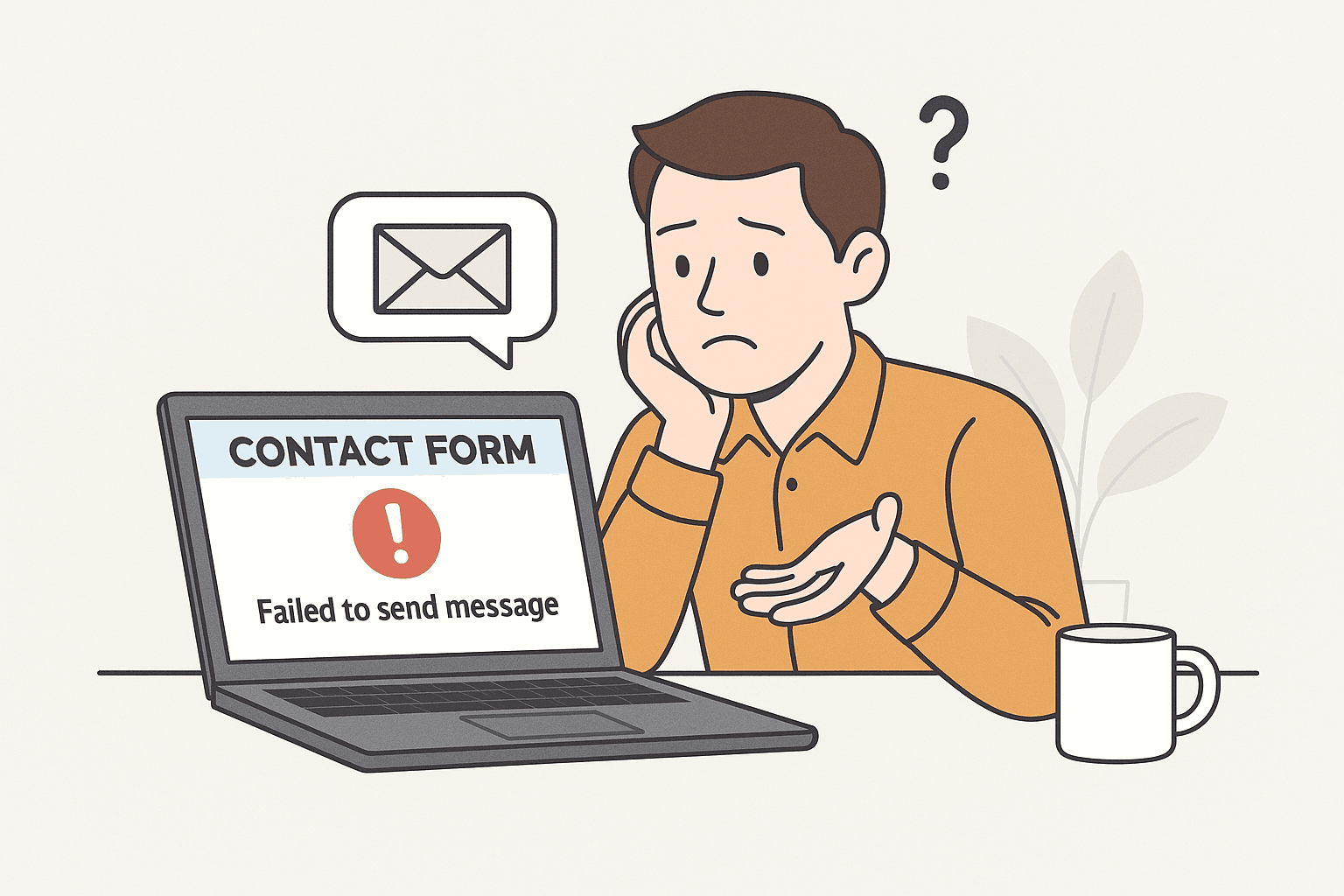Last Updated on by Azib Yaqoob
Your contact form is live. Visitors fill it out. But you never get the email. Sound familiar?
This is one of the most frustrating problems WordPress users face. Luckily, the fix is usually simple once you know where to look.
In this guide, I’ll over the exact reasons why your contact form isn’t sending emails and how to fix it, step by step.
Table of Contents
Why Contact Form Emails Fail to Deliver
There are a few common reasons this happens:
1. Your Hosting Server Isn’t Set Up to Send Emails
Many WordPress hosting providers don’t have mail functions properly configured. Some even block them for security reasons. That means even if the form is working, your server might not be able to send the email.
2. You’re Using the Wrong “From” Email Address
If your contact form sends emails using an address like [email protected], and that address isn’t verified or doesn’t exist, most mail servers will reject it.
3. Emails Are Going to Spam
Sometimes the form is working, but the emails end up in your spam folder. This is common when the domain isn’t authenticated or the message looks suspicious.
4. Your Contact Form Plugin Isn’t Configured Properly
Whether you’re using WPForms, Contact Form 7, or Fluent Forms, a small misconfiguration, like a missing recipient email, can stop emails from being delivered.
5. No SMTP (Simple Mail Transfer Protocol) is Set Up
By default, WordPress uses the wp_mail() function, which relies on PHP mail — and that’s unreliable. Using SMTP gives your email authentication and improves deliverability.
How to Fix Contact Form Email Issues in WordPress
Let’s walk through the proven steps to get your contact form emails working again.
Step 1: Install an SMTP Plugin
The first thing to do is stop relying on the default PHP mail function. Instead, install an SMTP plugin to authenticate your email.
Recommended SMTP plugins:
- WP Mail SMTP
- FluentSMTP (free and lightweight)
- Post SMTP
Once installed, choose a mailer like:
- Gmail
- Sendinblue (Brevo)
- Mailgun
- SMTP.com
- Your web host’s SMTP server
These services improve email deliverability by authenticating your messages.
Step 2: Verify Your “From” Email Address
Make sure the “From” email you use is:
- From your own domain (e.g.
[email protected]) - Verified with your SMTP service or host
- Matches what’s allowed by your SMTP provider
Don’t use free emails like @gmail.com for sending, these often get flagged or blocked.
Step 3: Check Contact Form Settings
Go to your form plugin and double-check:
- The recipient email address is correct (where the email should be sent)
- The from name and from email fields are filled properly
- The message template isn’t blank or malformed
Also test with a simple subject and message. Some special characters or code in the message can cause errors.
Step 4: Check Spam and Email Logs
- Check your spam folder to make sure emails aren’t landing there
- If you’re using WP Mail SMTP or FluentSMTP, go to the email logs to see if your form is triggering a send attempt
This can help you confirm whether the issue is with the form or the delivery.
Step 5: Test with a Different SMTP Provider
If your current SMTP setup isn’t working, switch to a different provider temporarily and test.
Gmail (via WP Mail SMTP) and Sendinblue (Brevo) are good free options to test.
Step 6: Use a Custom Domain Email Address
Set up a professional email like [email protected] through:
- Your hosting control panel
- Google Workspace
- Zoho Mail (free for one domain)
This looks more professional and helps avoid spam filters.
Step 7: Enable Domain Authentication (SPF, DKIM, DMARC)
If you’re using an external email service, make sure your DNS records are correctly configured:
- SPF: Authorizes specific mail servers to send for your domain
- DKIM: Adds a digital signature to your email
- DMARC: Protects your domain from spoofing
Your SMTP provider will give you the DNS records to add usually in your domain’s control panel.
Bonus Tip: Use Form Confirmation Messages
Even if the email doesn’t send, show users a clear confirmation message like:
“Thanks for contacting us. Your message has been received!”
This gives confidence that the form worked and reduces duplicate submissions.
Need help setting this up for your site? I offer WordPress setup and troubleshooting services. [Contact me here] to get expert help and ensure your contact form never drops a message again.

